
Starting June 1st, 2023 Our warehouse fee will be $0.65/cubic foot per month
In effort to lower the warehouse storage fee during inflation, we have went narrow aisle racking.This construction took us four months but the project is finally completed. With narrow aisle racking, we are able to drop storage by 24%.We as partners will go through this inflation together.
10/29/2024
Wondering how to ship frozen food without risking spoilage? Whether you're sending packaged food to supermarkets, corporate clients, or homemade meals to loved ones, keeping your items frozen and safe during transit is essential.
From smart packing techniques to choosing the right carrier, this guide from Worldcraft Logistics provides everything you need to ensure your frozen goods make it from Point A to Point B with ease. Join us as we dive into the top strategies for shipping frozen food - without the risk of melting!

When considering the transportation of frozen food, the primary goal is to ensure it arrives safely so it can still be consumed or sold. This means maintaining the proper temperature throughout and having preservation methods available at the destination. Frozen foods and other perishable items have consistent concerns, and you want to have a specific plan to address each issue before starting your shipment. Let's look at some of the most common considerations.
Temperature Control: Use insulated packaging, gel packs, or dry ice to maintain a consistent low temperature.
Shipping Time: Opt for express shipping to minimize transit time and avoid delays, especially over weekends.
Proper Packaging: Use insulated containers and moisture-resistant linings to protect items from temperature changes.
Dry Ice Regulations: Follow carrier guidelines and label packages properly, as dry ice is a regulated material.
Cold Chain Costs: Budget for added costs like express shipping and specialized packaging.
Transit Handling: Use “Fragile” and “Perishable” labels to ensure careful handling.
Insurance: Consider insuring shipments to protect against losses due to delays or spoilage.
A related note, packaging needs to be sturdy and often reinforced. This is to prevent boxes from breaking and letting warm outside air in. Sturdy materials can withstand some dents and bending without tearing or puncturing. This will help you keep your frozen goods intact throughout the transportation process.
By proactively addressing these concerns, you can reduce the risk of spoilage and ensure frozen foods arrive fresh and ready to enjoy.
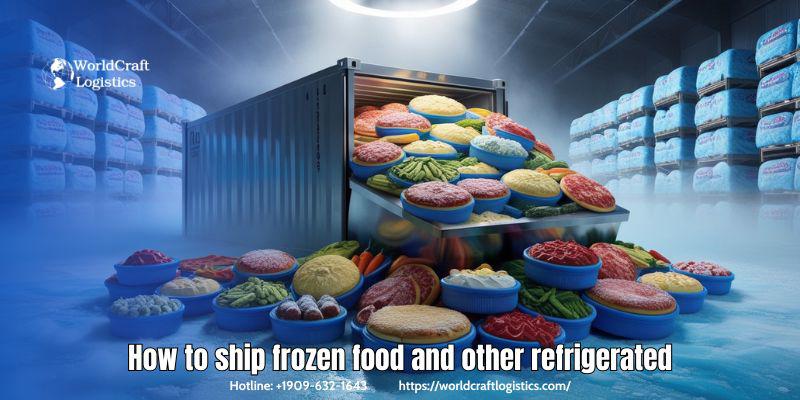
Shipping frozen food and other refrigerated items requires careful planning to ensure products remain at the right temperature throughout transit. Here’s a step-by-step guide to help you ship frozen and refrigerated goods successfully:
Include clear labels, such as “Perishable”, “Keep Refrigerated”, or “Keep Frozen”, to alert carriers and handlers. For dry ice shipments, the package must be labeled accordingly with the amount of dry ice inside.
Temperature fluctuations are a common cause of spoilage. By insulating the package and using cooling agents, you can maintain a consistent temperature during transit.
Shipping frozen or refrigerated goods early in the week avoids potential weekend delays, especially with perishable items that need to arrive promptly.
Some shipments, especially for high-value or highly perishable items, may benefit from temperature tracking devices. These provide real-time updates and ensure products remain within safe temperature ranges throughout the journey.
Many logistics companies offer insurance options that protect against losses from temperature excursions or delays.
Ensure your carrier is aware of the shipment’s specific requirements and has experience handling perishable or temperature-sensitive goods.
By following these steps, you can safely ship frozen and refrigerated items, ensuring they arrive fresh and intact for your customers or recipients.
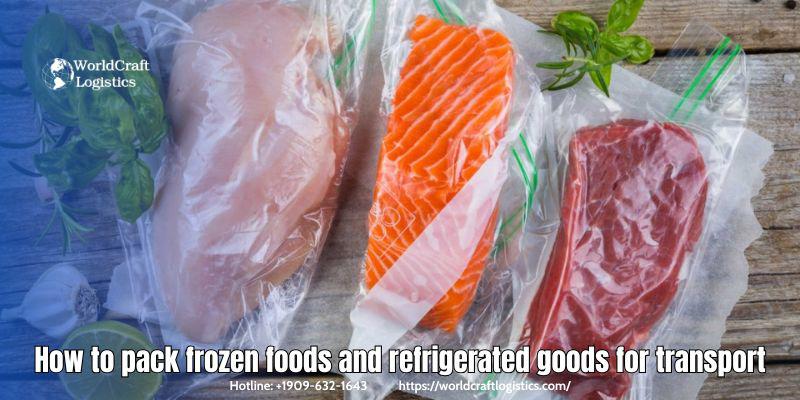
When preparing frozen food for transport, meticulous packing and refrigeration are critical. Here are some enhanced tips for packaging frozen and cold foods effectively:
Begin by securely enclosing each frozen food item in watertight plastic bags, particularly for those prone to leakage in case of damage during transit. For added safety, consider enveloping these bags in bubble wrap for an extra layer of protection.
Opt for an insulated box that fits both the frozen item and the outer shipping container snugly. This is crucial to prevent the frozen food from shifting inside the container while in transit. The insulated box also plays a vital role in maintaining the cool temperature of the frozen item throughout the shipping process.
Carefully place the frozen item, already packed in its insulated box, into the shipping container. At this stage, include any additional cushioning or cooling agents to ensure the item remains chilled during the subsequent stages of transit.

For effective shipping, incorporating dry ice or gel packs is essential. Use dry ice for items that need to stay frozen (like steak), and gel packs for those requiring a cool but not frozen environment (such as baked goods). Remember to check any shipping restrictions regarding dry ice with your chosen courier, as it's classified as hazardous and demands adherence to specific shipping guidelines.
After following these steps, seal the shipping box securely. Verify that there are sufficient cooling materials around the frozen item before finalizing the seal. Then, apply any necessary labels to your shipping box, such as a hazardous material sticker, and your frozen foods are ready for transport.
Key Insight: In the realm of frozen food shipping, whether using containers, bags, or other methods, always ensure the packaging is adequately cushioned. This precaution minimizes the risk of movement during transit, thereby reducing the likelihood of damage to your goods.
Explore more in our "How to Ship" series by looking at these options:
👉 How to ship alcohol - Regulations in the US and wine exports
👉 How to ship electronics and electronic components internationally
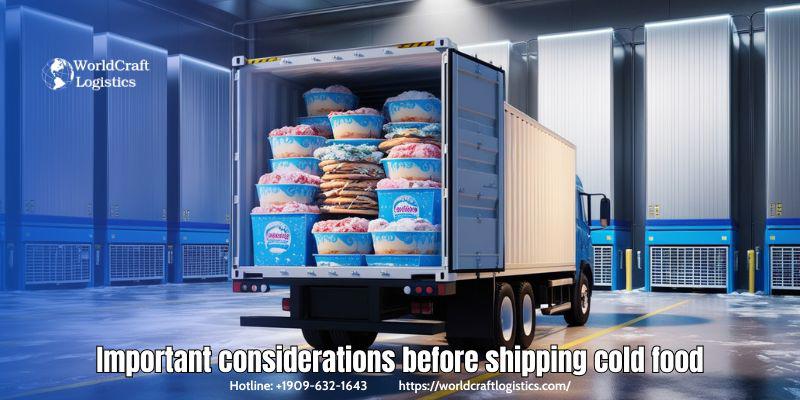
Standard ground delivery services can take up to ten business days, depending on the destination. This extended timeframe makes express courier services a more viable option for shipping frozen food items. Express delivery options like UPS Next Day Air®, FedEx First Overnight, or USPS Priority Mail Express reduce the risk of spoilage and ensure customer satisfaction by delivering frozen food items swiftly and freshly.
The right packaging is crucial for keeping foods frozen during transit. Foam insulating food shipping containers (such as Styrofoam), dry ice boxes, and cardboard boxes with insulated liners are effective choices. Ensure the shipping container is slightly larger than your item to accommodate ice packs or dry ice, which are essential for maintaining low temperatures.
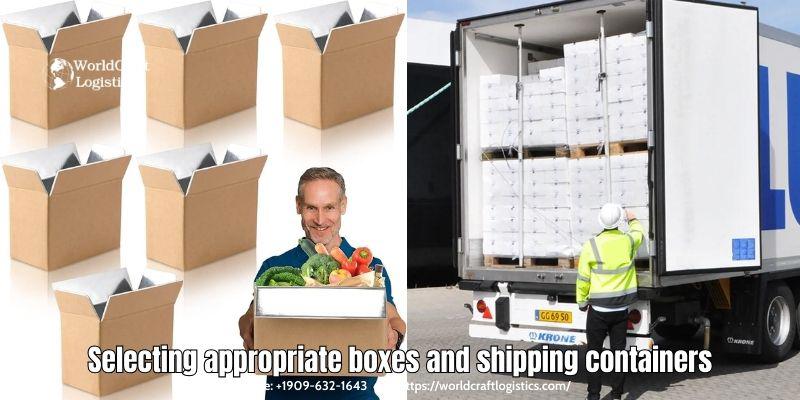
Unlike non-perishable items, frozen foods are prone to spoilage, making it imperative to use appropriate packaging materials. Options include gel packs, watertight plastic bags, sturdy corrugated cardboard boxes, and dry ice. For a range of packaging supplies, find a reliable source for materials suited for frozen food items.
Frozen shipments require a combination of frozen gel packs and other materials like bubble wrap for secure packing. An adequate amount of dry ice and frozen gel packs is essential, with proper ventilation in the packaging to accommodate dry ice. A general guideline is to use one pound of gel pack for every three pounds of meat. For seafood, double-bagging is advisable for extra protection against extreme temperatures. Watertight plastic is also recommended for items prone to leakage.
Shipping insurance and policies offers protection against lost, stolen, or damaged packages. Most couriers provide a basic $100 insurance for express services, some other units also support up to $10,000 of insurance for domestic and international packages. This insurance can be particularly valuable for high-end items like fresh sturgeon caviar, Norwegian salmon, Wagyu steak, cherries,..., safeguarding the merchant's investment in their frozen food shipments.
Each major U.S. carrier offers distinct options and guidelines for shipping frozen foods, each with their own strengths. Working directly with a carrier or through a Third-Party Logistics (3PL) provider is advised, and considering local or regional carriers specializing in refrigerated and frozen products is also beneficial.
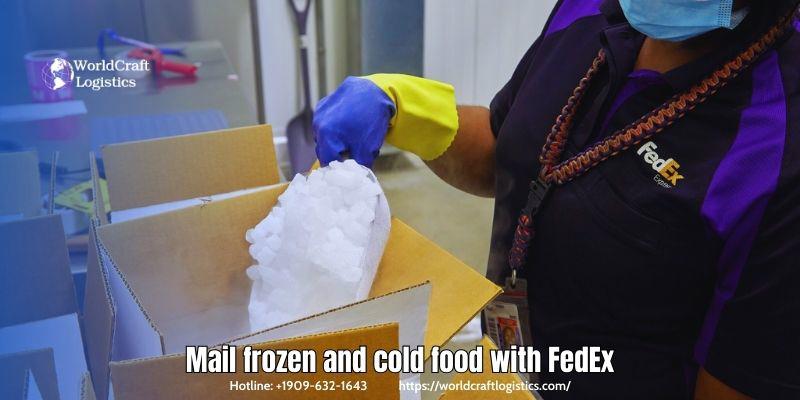
✔️ Services: FedEx offers specific services for shipping frozen items, including large, pallet-sized containers suitable for clinical, pharmaceutical, and food items.
✔️ Guidelines and Tracking: It provides guidelines for using dry ice and assists with labeling and packaging processes. FedEx’s SenseAware shipments offer temperature tracking, ensuring goods remain cold during transit.
✔️ Packaging Requirements:
Use sturdy packaging or FedEx's pre-configured options.
Packaging must withstand at least 24 hours in transit.
Foam containers should be used within external packaging, with a recommended thickness of 1-1/2” or 4cm or more.
Mark boxes with dry ice weight and other relevant details.
✔️ Shipping Options: Utilize fast services or temperature-controlled options. FedEx Express aims for 24-hour delivery.
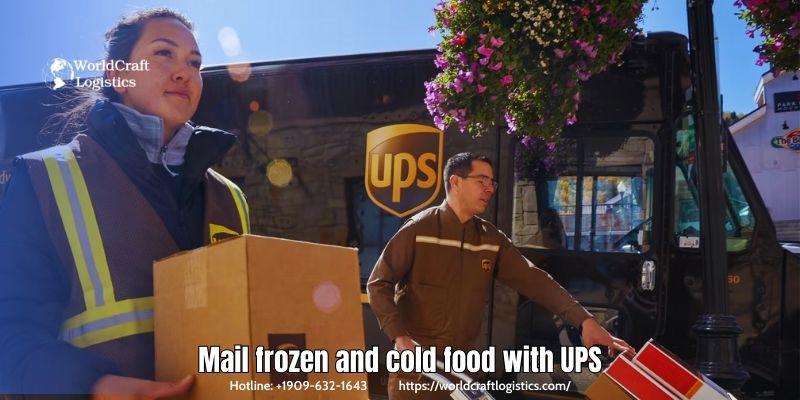
✔️ Emphasis on Containers: UPS advises using thick foam with outer packaging and space for dry ice, cautioning against the use of regular ice.
✔️ Expert Advice: Quint Marini, UPS Package Design and Test Lab's manager, recommends considering a combination of dry ice and frozen gel packs, particularly for transit times exceeding a day.
✔️ Key Considerations:
Adhere to regulations on dry ice, including weight limits and international restrictions.
Prefer thicker foam containers.
Consider Next Day Air for delivery within 30 hours.
Contact UPS Cold Chain services for freight inquiries and support beyond healthcare settings.
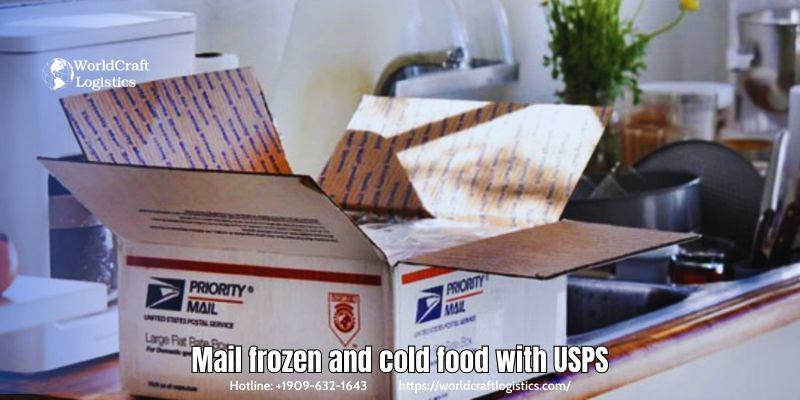
✔️ General Flexibility: While USPS doesn’t offer specific cold or frozen shipping options, it provides flexibility for shipping items like sealed coolers.
✔️ Shipping Guidelines:
Use sturdy, leak-proof packaging.
Domestic shipping accepts up to 5 lbs. of dry ice per mail piece on air, with appropriate labeling and declaration.
Mark packages with the dry ice weight and food names contained within.
Priority Mail and Priority Mail Express are recommended for items needing refrigeration.
✔️ Restrictions: Be aware of restrictions for mailing produce to certain states like Florida, Hawaii, California. Checking the USPS FAQ is advised for specific guidelines.
Each carrier presents unique advantages, so choosing the right one depends on specific needs such as transit time, destination, and the nature of the frozen products being shipped.

The cost of shipping frozen food depends on several factors, such as distance, shipping speed, packaging requirements, carrier choice, and volume. Here’s a breakdown of the primary cost elements and typical prices:
Domestic Shipping: Shipping frozen food within the same country is typically cheaper than international shipping. For example, sending frozen food within the U.S. through UPS or FedEx with next-day or 2-day delivery often costs between $30 to $150, depending on the package weight and size.
International Shipping: International rates can vary widely, generally starting at $100 and going up significantly based on distance and shipping speed.
Frozen food requires insulated packaging (like foam coolers) and dry ice or gel packs to maintain low temperatures. The cost of these materials can range from $5 to $50 per package, depending on the type of insulation and the amount of dry ice or gel packs needed.
UPS and FedEx: Both offer specialized services for shipping perishables. With packaging, delivery speed, and special handling, their costs can range between $30 to $200.
USPS: While not ideal for frozen foods, USPS offers Priority Mail Express for faster delivery times, costing $20 to $100 for domestic packages, but it may not be the best for maintaining frozen temperatures.
Some carriers add a surcharge for using dry ice or for shipments requiring special handling. Dry ice may also come with specific quantity limits, depending on the carrier and regulations.
Example Cost Estimates:
Small 5-pound package (domestic, next-day shipping): Approximately $40 to $100.
Larger 20-pound package (domestic, next-day shipping): Approximately $100 to $200.
International 10-pound package (express shipping): Starting around $150 and can go higher depending on destination and speed.
For more precise rates, you can get quotes directly from carriers or use shipping rate calculators on their websites.
If you are looking for ways to transport frozen food for your business, the best option is to contact 3PL shipping companies. Find a partner capable of handling the specifics for your industry and products, including strict storage, technology support and sensors, comprehensive cold chain monitoring, and product safety assurance.
Additionally, correctly transporting them is a crucial factor in ensuring they reach the consumer still fresh, uncontaminated, and undamaged. Adhere to proper packing and shipping procedures: raw meat, seafood, fruits, ice cream... you can totally use services from Worldcraft Logistics or other express delivery companies.
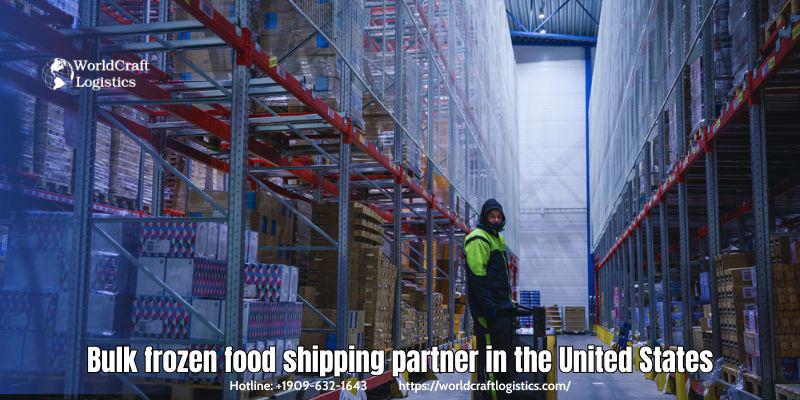
Worldcraft Logistics also offers many other shipping solutions, supporting individual and small retailers on e-commerce platforms:
Shipping Rates: Forget about estimating! We help you compare prices from various carriers, advising customers on the best shipping options.
Insurance: We understand that protecting your package during transit is very important. Worldcraft Logistics offers insurance that can go up to $1,000, giving you peace of mind.
Tracking: Maintain transparency with customers. We have a system for tracking orders and automatic notifications, from the time of dispatch to delivery.
Are you ready to ship? Contact us for FREE and find out how you can create an optimal shipping experience for transporting frozen food.
It is recommended to use UPS, USPS, FedEx all offer overnight express delivery service, which is ideal for shipping perishable items such as frozen foods. These services ensure food is delivered quickly, reducing transit time and minimizing the risk of spoilage or thawing. Each of these carriers has specific packaging requirements and guidelines for shipping frozen items to ensure they maintain their temperature and arrive in good condition. It is important that you familiarize yourself with these requirements and choose the service that best suits your needs based on factors such as cost, delivery speed and available insurance options.
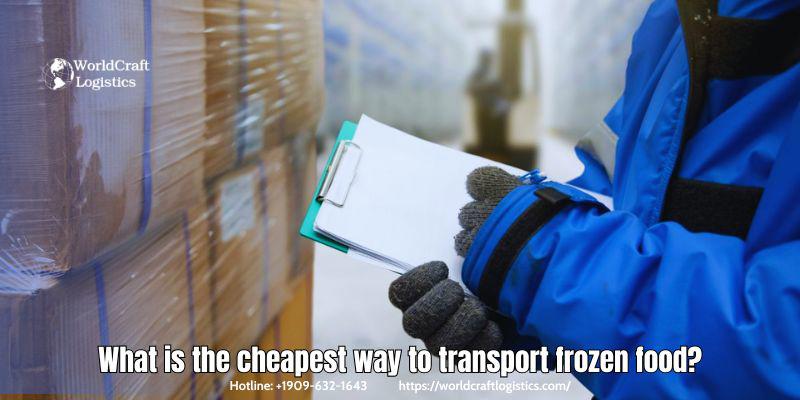
To ship frozen food cheaply, compare carrier prices (UPS, FedEx, USPS), use ground shipping for nearby destinations, consider flat rate options for heavy items, optimize packaging, explore bulk shipping discounts, negotiate rates, and check for business account discounts. Ensure the carrier maintains required temperatures.
You can reach out to the express delivery service at the post office for guidance and pricing information. They will securely arrange your perishable frozen goods in an insulated box. First, put your item in the box. For items prone to melting or thawing, encase them in a waterproof plastic bag before putting them in the box. Ensure your items are positioned to allow adequate space for dry ice.
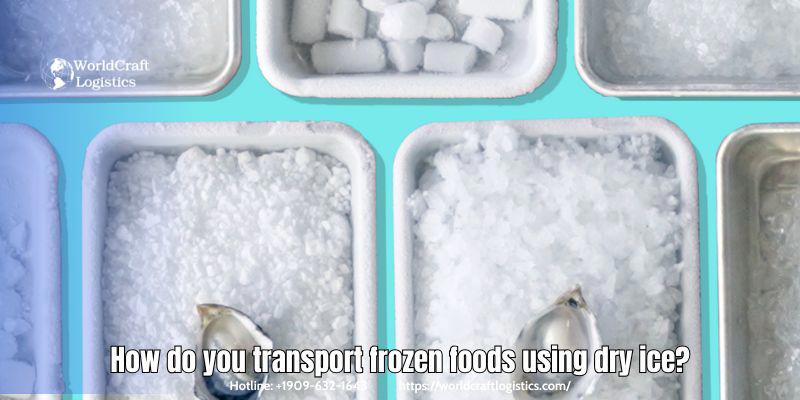
To transport frozen foods with dry ice:
Use an insulated container.
Handle dry ice with gloves.
Calculate the needed amount of dry ice based on shipment duration.
Wrap food to prevent direct contact with dry ice.
Place dry ice below and above the food, filling gaps with packing material.
Ventilate the container for gas escape.
Label the package as containing dry ice, specifying the weight.
Select expedited shipping and comply with carrier regulations.
Inform the recipient about the dry ice.
Ensure vehicle ventilation if transporting by car.
With a weight of 1 - 10kg, 5 lbs of dry ice will keep cold for about 12 hours.
In conclusion, shipping frozen foods efficiently requires careful planning, the right materials, and adherence to safety guidelines. By choosing appropriate packaging, using dry ice correctly, and selecting a reliable shipping service, you can ensure that your frozen products reach their destination in optimal condition. Remember to stay informed about the latest shipping regulations and always prioritize the quality and safety of your perishable items during transit. With these steps in mind, you're well-equipped to handle the challenges of shipping frozen foods.
SEO
Digital Marketing/SEO Specialist
Simon Mang is an SEO and Digital Marketing expert at Wordcraft Logistics. With many years of experience in the field of digital marketing, he has shaped and built strategies to effectively promote Wordcraft Logistics' online presence. With a deep understanding of the logistics industry, I have shared more than 500 specialized articles on many different topics.
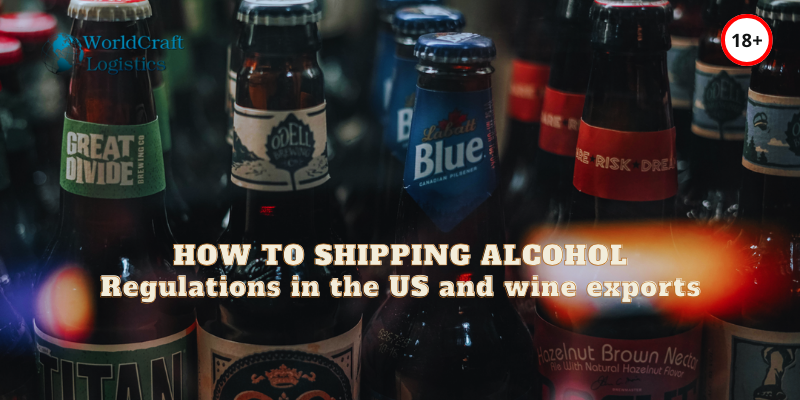
Shipping
12/21/2023

Shipping
02/28/2024

Shipping
12/24/2023

Shipping
04/02/2024

Shipping
11/04/2024